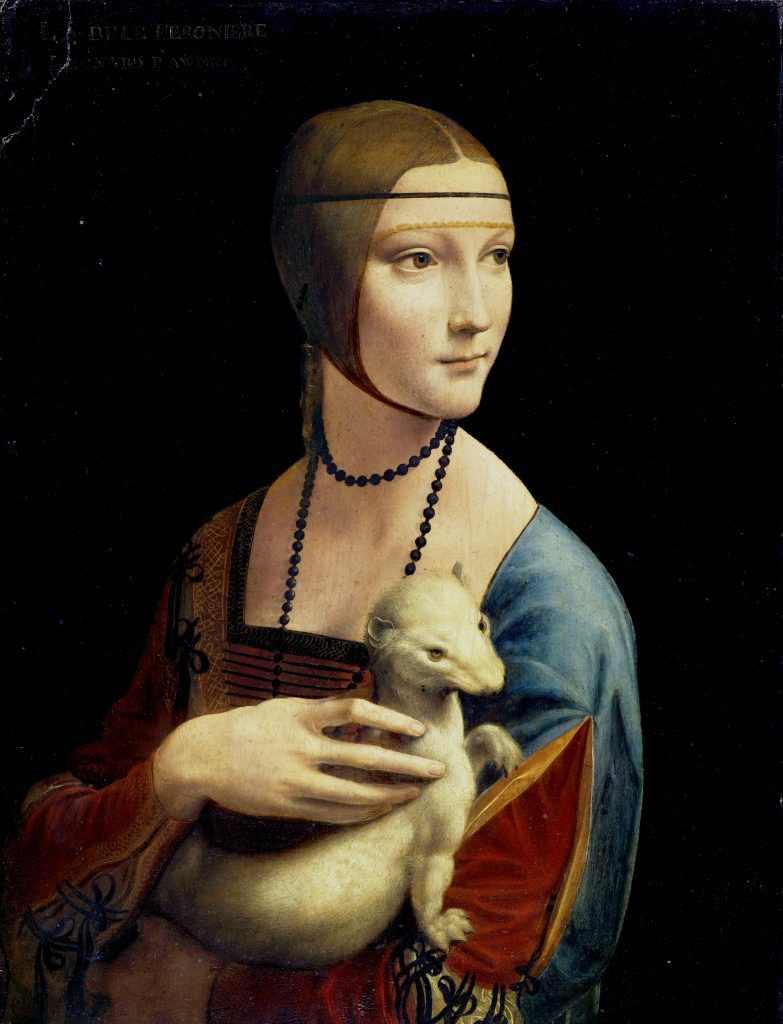Lady with an Ermine
Leonardo da Vinci‘s “Lady with an Ermine” is a masterpiece of Renaissance portraiture fine art. Painted in the late 15th century, the piece depicts a young noblewoman holding an ermine, a symbol of purity and chastity. The painting is notable for its realism, its use of light and shadow, and its psychological depth.
The woman in the painting is believed to be Cecilia Gallerani, the mistress of Ludovico Sforza, Duke of Milan. She is depicted with a calm, enigmatic expression, looking off to the side as if lost in thought. Her dress is sumptuous and detailed, with rich textures and colors, while the ermine is rendered with remarkable precision, its white fur contrasting sharply with the black background.
One of the most striking features of the painting is the use of light and shadow to create a sense of depth and realism. The light falls on the woman’s face and neck, illuminating them with a soft, golden glow. Her hair and the ermine are cast in shadow, adding to the overall sense of depth and three-dimensionality. The subtle interplay of light and shadow is one of the hallmarks of da Vinci’s style, and it is on full display in this painting.
Another notable aspect of the painting is its psychological depth. The woman’s expression is subtle and enigmatic, suggesting a complex inner life. Some have interpreted her gaze as melancholy or wistful, while others see a sense of restraint or distance. The ermine, meanwhile, is a symbol of purity and chastity, and its presence in the painting adds to the overall sense of the woman’s virtuousness and dignity.
One of the most impressive aspects of “Lady with an Ermine” is the way that it combines naturalism with idealism. The woman is depicted in realistic detail, with every fold and crease of her dress rendered in exquisite detail. However, she is also presented as an idealized vision of beauty and grace, with her calm demeanor and noble bearing.
In conclusion, “Lady with an Ermine” is a masterpiece of Renaissance portraiture, combining realism with idealism, naturalism with symbolism, and depth with simplicity. It is a testament to da Vinci’s skill as an artist and his ability to capture the complex psychology of his subjects. The painting continues to fascinate and inspire new generations of art lovers, offering a window into the world of Renaissance Italy and the art and culture of the time.

